PAPILIO GLAUCUS:
THE EASTERN TIGER SWALLOWTAIL
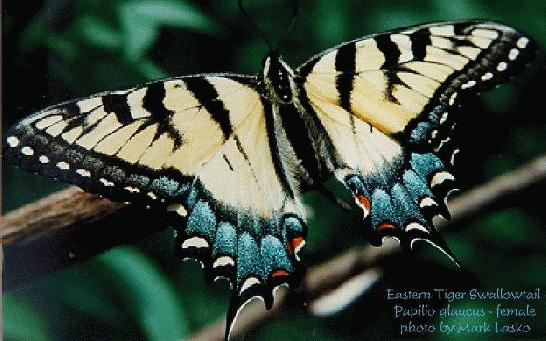
Photo courtesy of Mark Lasko.
This extremely colourful female has an excess of irridescent blue scales. Males have no or very few blue scales in the lower wings.
PAPILIO GLAUCUS: |
This species is triple-brooded in the South with adults flying from
February to November. |
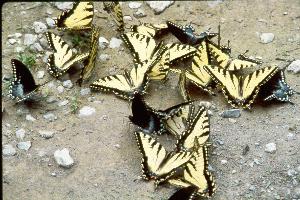 Photo courtesy of Mark Deering | Butterflies frequently
gather to drink up moisture and nutrients from puddles, especially those
mingled with animal excrement or urine. |
Rearing tigers is easy. Females in either the yellow or black form
(females only) will lay many small green eggs, usually singly, on either side of host plant
leaves. |
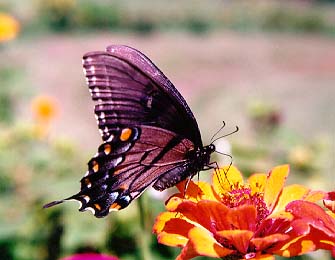 Photo courtesy of William T. Hark |
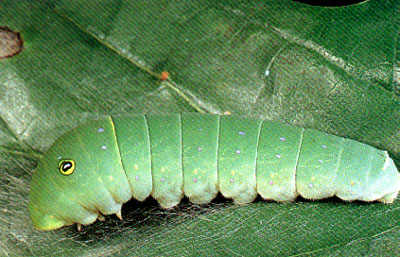 Photo courtesy of David L. Wagner | The larvae, with their interesting false eyespots which become apparent
as larvae move into
green third instar, also feed on
Magnolia, Sweetbay, Birch, Cottonwood, Mountain ash and Willow. |
Chrysalids are hung in typical swallowtail fashion often from the underside of a twig or on a vertical surface. Eclosion from the first brood(s) is usually after 10-14 days. Fall broods overwinter in the chrysalid stage. |  |
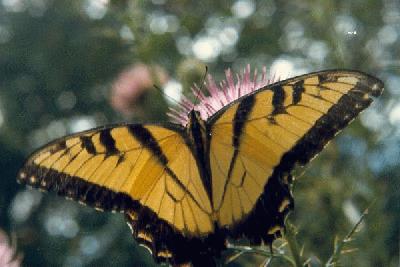 Photo courtesy of Doug Malone | The male to the left is nectaring on thistle,
one of this species' favorite food plants. |
Danaus plexippus migrant stray |
Monarch |
|
| Google is one of my favourite Search Engines and seems to offer the most extensive listing of butterfly sites. Use your back arrow to return to this site after using the Google search box to the left. |
Here are some additonal northeastern North American butterflies of interest.
To my knowledge, these species do not fly on Prince Edward Island, but I have reared
most of them as a boy growing up in rural New Jersey.
Battus philenor |
Pipevine swallowtail |
Visit other websites maintained by Bill Oehlke:
I offer two membership sites that far exceed the coverage offered on the sites listed above: